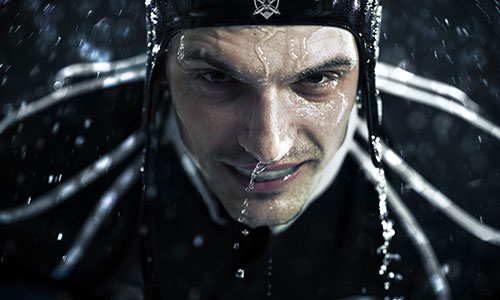World Rugby steps up attack on concussion
- Overview
- Full article
Rugby can be a bruising sport. The physical signs of battered and bleeding bodies limping from the pitch are obvious. Less clear is the damage being done to our most vital organ – the brain.
World Rugby’s Chief Medical Officer, Martin Raftery, has told BBC’s Panorama programme that “the biggest area we know where concussion is going to occur is in the tackle, so that will help us look at the tackle and see what we can do to make it safer”.
It’s unclear what rule changes might be considered to make tackles safer, but the renewed focus on serious head injuries in rugby should be welcomed.
Figures from England Rugby consistently put concussion at the top of most common match injuries in Premiership competition. But concussion happens at every level of the sport, from juniors to elite athletes. We have to take steps to reduce the incidence of concussion wherever possible.
High tackles are already outlawed in rugby, but concussion can occur when there is an accidental clash of heads or no direct head impact at all. A heavy hit to the body can produce enough force to cause a player’s head to snap back at high speed – causing their brain to impact inside the skull.

Every concussion irreversibly damages white matter in the brain and can temporarily alter the way the brain functions, affecting: consciousness, concentration, memory, balance and coordination.
When recognised, concussion can often be treated simply with rest, but it’s not always easy to diagnose from the side lines - especially when affected players make efforts to intentionally hide their symptoms in order to stay on the pitch.
The real danger comes with what’s known as ‘Second Impact Syndrome’ (SIS), when the brain - still trying to recover from an initial concussion, suffers a second blow. The brain’s ability to regulate blood flow can be compromised and increased pressure on the brain can lead to serious long-term injury – and in rare cases, even death.
Even over time, multiple concussions can have an accumulative effect – and have been linked to cognitive impairment later in life.
Whatever rules might be applied to tackles in the future, it will always be crucial to recognise the signs of concussion and remove players from the field whenever concussion is suspected.
If players display any signs or symptoms of being concussed, they should be monitored and medically assessed before returning to play. If you suffer any of the signs or symptoms of concussion, never try to play on. Tell someone you’re not feeling o.k. and get yourself out of play. There’s no shame in leaving the pitch.
Visible signs of suspected concussion
One of more of the following signs may suggest concussion:
• Confusion and lack of awareness of surroundings
*British Journal of Sports Medicine
Signs and symptoms of suspected concussion
• Headache
• Dizziness
• Confusion
• Feeling slowed down
• “Pressure in head”
• Blurred vision
• Sensitivity to light
• Amnesia
• Feeling like “in a fog“
• Neck Pain - “Don’t feel right”
• Difficulty remembering
• Difficulty concentrating
Last updated Wednesday 27 January 2016
First published on Monday 21 September 2015

